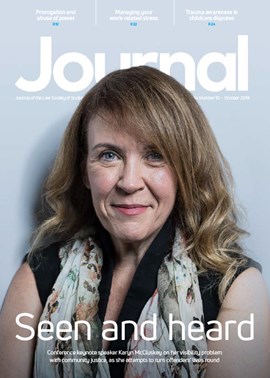
The Financial Action Task Force (FATF) published a study into the money laundering and terrorist financing vulnerabilities of legal professionals on 25 June 2013. It is a useful source of information and training material.
The aim of the report is to determine the extent to which legal professionals are at risk of being used by money launderers/terrorist financers, and to identify the red flag indicators of money laundering or terrorist financing. The research takes account of input from regulatory bodies, law enforcement, FATF members and academics as well as legal professionals.
The conclusion is no surprise. Legal professionals are at risk of being used by launderers, as evidenced by the detailed case studies and information about prosecutions. Equally, it is recognised that most legal professionals are trying to “get it right”, which should provide comfort to firms. The diagram in the executive summary is useful to illustrate the spectrum of involvement by legal professionals.
For legal professionals the real challenge is how to spot potential money laundering, but this report contains a considerable amount of material of real value. It also acknowledges the differences between jurisdictions in terms of the definitions of confidentiality, privilege and professional secrecy. Solicitors who are unsure about the issues should refer to the Law Society of Scotland’s guidance.
The report provides a rich source of material for educational and awareness-raising purposes. Indeed one of the key conclusions is the importance of education on the vulnerabilities of legal professionals. The better trained your staff are about the real risks and warning signs, the more chance there is that they will raise queries with the MLRO.
The following legal services are identified by the report as being vulnerable to misuse (again, no real surprises):
- client account;
- purchase of property;
- creation and management of trusts and companies;
- setting up and managing charities;
- administration of estates and preparing powers of attorney;
- providing insolvency services;
- providing tax advice;
- engaging in litigation where the underlying dispute is a sham, or the debt involves the proceeds of crime.
The red flags are at chapter 5, but the main areas of risk are the client, the parties, source of funds, choice of lawyer, and nature of the retainer. As is always the case, you need to consider them in context. They should help in applying a risk-based approach to the customer due diligence (CDD) requirements and help you/your staff identify potential concerns.
Solicitors are at risk of being used by money launderers/terrorist financers. Ensuring that you and your staff are familiar with the latest information will protect the firm, and reminding your staff on a regular basis of the warning signs or red flags should avoid the risk of complacency. This report will provide valuable assistance.
In this issue
- Widening access to the stocks and gallows?
- Family migration revisited
- The same but different
- Controlling tendency
- ESPC: out of the parental home
- Offshore employment: floating goalposts?
- Reading for pleasure
- Opinion column: David O'Hagan
- Book reviews
- Profile
- President's column
- Make the most of your "multiples"
- Sep rep: all to play for
- The bigger they are...
- Licensed to thrill
- Capacity challenge
- One year, and counting?
- Selling your rights... for what?
- The voice of technology
- A serious matter
- Relocation: where are we now?
- Whistle for reform
- Same sex marriage: for richer, for poorer
- Scottish Solicitors' Discipline Tribunal
- Residential property review takes shape
- In-house lawyers seek a rising star
- Mentoring: the way forward
- How not to win business: a guide for professionals
- Comm prop risks
- Ask Ash
- Crossed purposes
- Conference looks for profession to evolve
- Law reform roundup
- Help with the red flags







